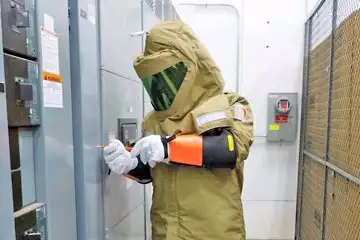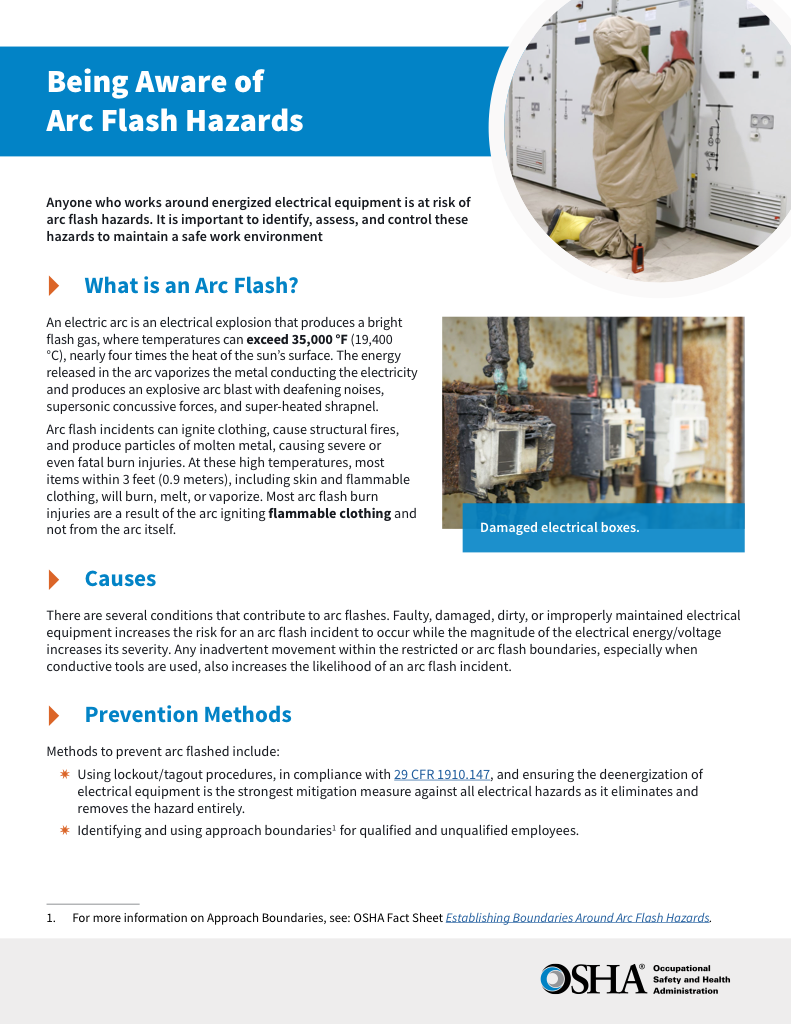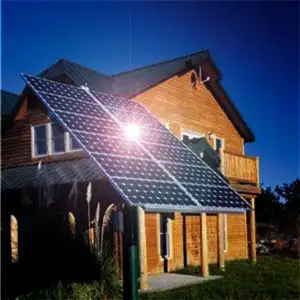Arc Flash Suit Explained
By R.W. Hurst, Editor

CSA Z462 Arc Flash Training - Electrical Safety Essentials
Our customized live online or in‑person group training can be delivered to your staff at your location.

- Live Online
- 6 hours Instructor-led
- Group Training Available
Download Our OSHA 4475 Fact Sheet – Being Aware of Arc Flash Hazards

- Identify root causes of arc flash incidents and contributing conditions
- Apply prevention strategies including LOTO, PPE, and testing protocols
- Understand OSHA requirements for training and equipment maintenance
An arc flash suit is critical protective clothing that shields electrical workers from burns, arc blasts, and extreme thermal energy. This NFPA 70E-compliant PPE ensures safety during maintenance on energized equipment.
What Is an Arc Flash Suit?
An arc flash suit is specialized personal protective equipment (PPE) designed to protect electrical workers from explosions and severe thermal exposure.
✅ Thermal Protection: Rated by ATPV (cal/cm²), outfits are categorized from 8 to 100 cal, aligning with NFPA 70E and CSA Z462 standards.
✅ Comprehensive Coverage: Includes jackets, bib overalls, hoods, gloves, and face shields for full-body protection.
✅ Essential for High-Risk Tasks: This is crucial for maintenance, testing, and switching operations on energized equipment over 50 volts.
Request a Free Training Quotation
An arc flash suit is a full-body, flame-resistant garment designed to safeguard electrical workers from the intense heat, pressure, and energy released during a flashover incident. This protective electrical gear is essential for tasks involving energized equipment such as switchgear, transformers, or circuit breakers. Rated by their ability to withstand thermal incident energy, electrical safety gear is classified by cal/cm² (calories per square centimetre), with options ranging from 8 cal to 100 cal or more. This guide explains the different types of special-rated clothing, key safety standards like NFPA 70E and CSA Z462, and how to select the right garment based on hazard level and job task. To understand which PPE category your suit fits into, explore our Arc Flash PPE Category overview.
Workers exposed to energized systems of 50 volts or more — including electricians, engineers, and maintenance personnel — rely on protective clothing when performing tasks like testing, maintenance, or switching in high-voltage environments. For a visual breakdown of PPE requirements aligned with NFPA 70E standards, including incident energy exposure levels and corresponding protective equipment, review the Arc Flash PPE Requirements Chart.
FREE EF Electrical Training Catalog
Download our FREE Electrical Training Catalog and explore a full range of expert-led electrical training courses.

- Live online and in-person courses available
- Real-time instruction with Q&A from industry experts
- Flexible scheduling for your convenience
Why It Matters
An arc flash (AF) is an electrical explosion caused by an uncontrolled electrical fault. Temperatures can exceed 35,000°F, creating blinding light, extreme pressure, molten metal, and high-decibel sound. The resulting blast adds further hazards like flying debris and shrapnel. This is why a thermal-rated suit is essential PPE for those working on energized systems (CCOHS).
How Incident Energy Is Calculated (IEEE 1584)
Arc flash suit selection is based on the incident energy a worker may be exposed to. This energy, measured in cal/cm², represents the thermal load on the body. The widely adopted engineering method for these calculations is IEEE 1584, which uses system voltage, fault current, protective device clearing times, and working distances to model exposure. Results define the rating required, ensuring the chosen PPE aligns with NFPA 70E and CSA Z462 safety categories.
Arc Flash Suit PPE Category Comparison Table
| PPE Category | Minimum Rating (cal/cm²) | Typical Suit Components | Applications |
|---|---|---|---|
| CAT 1 | 4 | FR shirt + FR pants | General electrical work (120V–240V panels) |
| CAT 2 | 8 | FR shirt + pants or coverall, face shield | Panel maintenance, disconnect switch operation |
| CAT 3 | 25 | Rrated coverall, balaclava, face shield | Industrial switchgear, MCCs, 480V systems |
| CAT 4 | 40+ | Arc flash suit with hood, gloves, boots | High-voltage substations, AF testing, 600V+ environments |
To protect workers from an electrical thermal hazard, employers must provide thermal-rated PPE that matches the level of risk identified in the AF study. A critical factor in selecting the right flame-resistant garment is the ATPV (Arc Thermal Performance Value), which indicates the maximum incident energy the garment can withstand without causing second-degree burns. For tasks involving high-energy equipment, such as switchgear maintenance or live electrical diagnostics, Category 4 PPE is required, offering the highest level of protection with suits rated at 40 cal/cm² or higher. For a visual breakdown of PPE requirements aligned with NFPA 70E, review the Arc Flash PPE Requirements Chart.
Arc Flash Suit Ratings
Arc flash suit ratings are determined by their ATPV, measured in calories per square centimetre. The higher the rating, the more protection against thermal energy. NFPA 70E and CSA Z462 define four PPE categories, with thresholds at 4, 8, 25, and 40 cal/cm².
Some extreme tasks require 100 cal suits, often used in specialized industrial environments. To understand suit types, see our 40 Cal Arc Flash Suit and 100 Cal Arc Flash Suit articles.
For lower-energy conditions, our Arc Flash Category 1 PPE guide explains compliant protective gear.
Arc Flash Suit Materials: Nomex, Kevlar, and More
Electrical safety apparel is constructed from flame-resistant (FR) fabrics:
-
Nomex® – Lightweight, breathable, ideal for mobility in moderate-risk environments.
-
Kevlar® – Durable and heat-resistant, extending garment life cycle.
-
Other blends – Carbon fibre, PVC, or neoprene for specific chemical or environmental resistance.
Multi-layer construction is common, combining materials for layered thermal protection. See our PPE Performance guide for more on testing and standards.
Regulatory Context & AF Boundaries
Under NFPA 70E, the arc flash boundary is defined at 1.2 cal/cm² — the point where exposure causes the onset of second-degree burns. OSHA mandates employers to assess these hazards and provide PPE accordingly. CSA Z462 in Canada mirrors these requirements. Workers must stay outside this boundary unless wearing the appropriate thermal-rated suit and PPE.
How to Choose the Right Arc Flash Suit
When selecting an NFPA 70E-compliant suit, consider:
-
Incident energy level — Based on system study or labeling.
-
Task frequency & mobility — Choose lighter suits when possible.
-
Environmental hazards — Moisture, confined space, or chemical exposure may require special fabrics.
-
Compliance — Ensure PPE meets NFPA 70E or CSA Z462 standards.
A well-fitted outfit that includes gloves, a hood, and a face shield ensures maximum protection and compliance. Based on specific hazard levels, consult the Arc Flash Safety Gear resource for insights into selecting appropriate safety gear, including gloves, face shields, and hoods.
Frequently Asked Questions
What is the proper rating for an arc flash suit?
It depends on the task’s incident energy. A 40 cal/cm² suit may be required for high-energy tasks, while an 8 cal suit may suffice for routine panel work.
Electricity Today T&D Magazine Subscribe for FREE

- Timely insights from industry experts
- Practical solutions T&D engineers
- Free access to every issue
What’s included in a full flame-resistant suit?
Typically, a jacket, bib overalls or pants, hood or face shield, FR gloves, and electrical-rated boots.
How do you maintain an arc flash suit?
Clean per manufacturer instructions, inspect for wear, and store in a dry area away from sunlight.
When is 100 cal protection required?
Only for specialized high-risk tasks identified through an AF study.
An arc flash suit is a critical piece of personal protective equipment (PPE) for electrical workers exposed to high-energy systems and electrical hazards. These flame-resistant garments, typically made from materials like Nomex and Kevlar, provide full-body protection against intense heat, blinding light, and blast pressure. Available in protection levels ranging from 8 to 100 cal/cm², this electrical safety apparel is vital in meeting NFPA 70E and CSA Z462 standards. Choosing the appropriate outfit ensures both regulatory compliance and worker safety during energized maintenance, testing, or troubleshooting tasks.
Related Articles:







